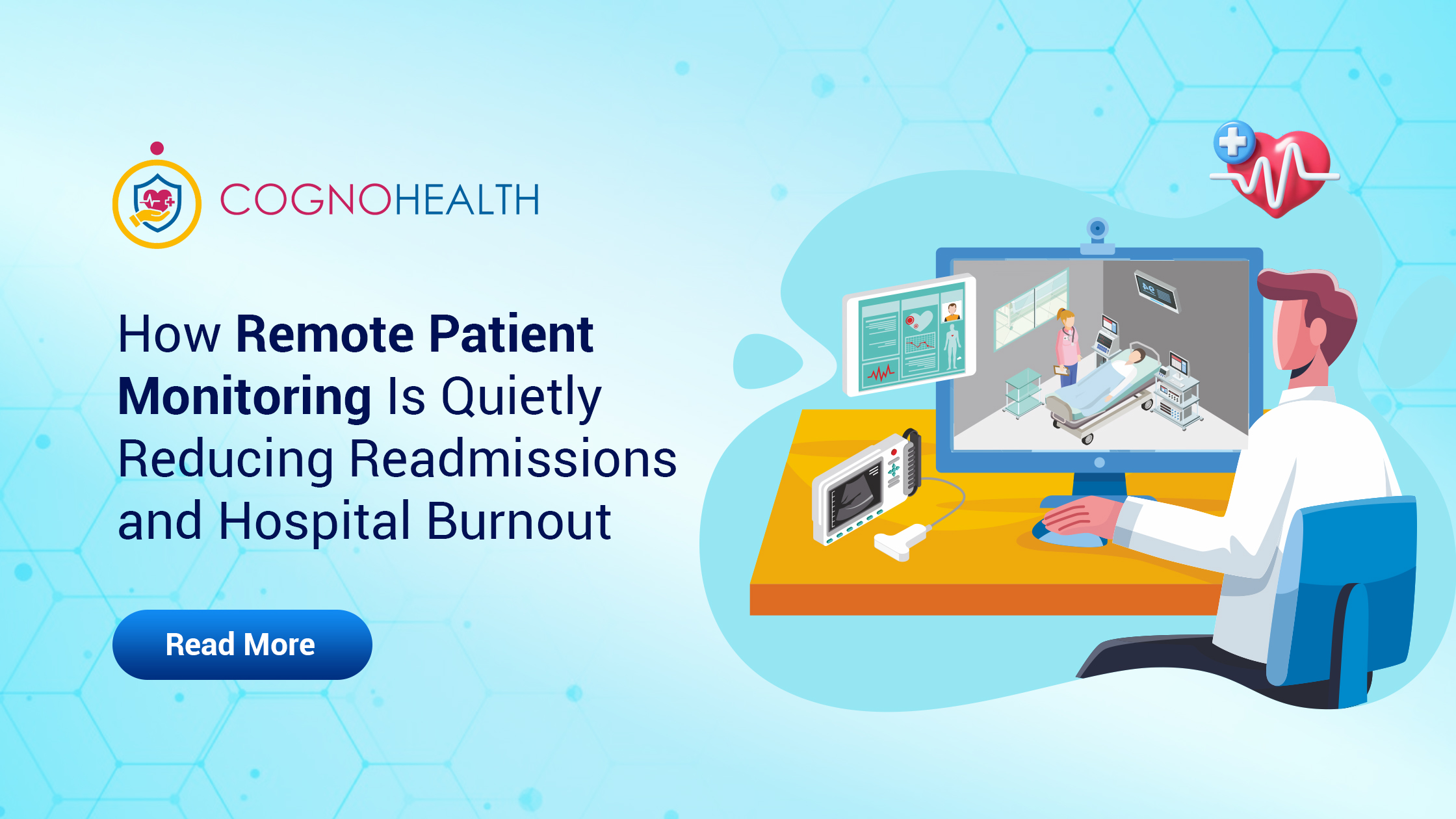
What Is Remote Patient Monitoring (RPM)?
Remote Patient Monitoring (RPM) is a form of healthcare delivery that uses digital technologies to monitor and analyze patient health data outside traditional clinical settings. From tracking blood pressure and glucose levels to post-surgical recovery metrics, RPM devices collect real-time health data and transmit it securely to healthcare providers.
The goal? Prevent medical complications, detect early warning signs, and reduce unnecessary hospital readmissions—all while improving the patient experience and easing pressure on hospital staff.
As demand for Remote Patient Monitoring (RPM) India rises, especially post-pandemic, hospitals are investing heavily in RPM solutions to create smarter, more responsive care models.
The Readmission Problem: A Silent Healthcare Crisis
Every year, hospitals across the globe report millions of avoidable readmissions. In India alone, hospital readmission rates are contributing to overworked emergency rooms and stressed ICU resources. In many cases, patients are discharged only to return within weeks due to undetected changes in their condition.
Lack of post-discharge follow-up missed medication, or subtle vital sign deviations often go unnoticed until it’s too late.
With Remote Patient Monitoring (RPM), this cycle can be broken.
RPM devices enables care teams to remotely track critical health indicators, analyze real-time trends, and intervene before issues escalate turning reactive care into proactive health management.
Hospital Burnout: An Overlooked Threat
Burnout is now a leading reason for physician and nurse turnover. Hospitals already grappling with limited resources face massive workforce shortages, long shifts, and emotional fatigue.
Here’s how Remote Patient Monitoring (RPM) Devices directly reduce burnout:
- Less manual charting: Data is collected and stored automatically.
- Fewer emergency interventions: Early alerts allow timely response.
- Smarter triage systems: Staff are only alerted for anomalies.
By reducing the need for in-hospital checks and repetitive follow-ups, RPM systems provide clinical staff with breathing space freeing up time to focus on high-risk cases and long-term treatment plans.
Why Remote Patient Monitoring (RPM) Is a Must-Have for Modern Hospitals
With increasing adoption of health tech in India, RPM has moved from being a luxury to a necessity. Hospitals implementing Remote Patient Monitoring (RPM) solutions are already seeing:
- Improved patient compliance post-discharge
- Streamlined outpatient workflows
- Higher patient satisfaction scores
The ability to monitor patients’ vitals remotely through server-synced RPM devices means physicians don’t rely on second-hand reporting or irregular check-ins. Whether it’s monitoring blood glucose or oxygen levels, decisions are backed by real-time, verified data.
Moreover, RPM fosters better engagement. Patients feel supported knowing their recovery is actively being tracked even at home using RPM devices. For chronic conditions, especially diabetes and hypertension, this continuity of care can mean the difference between stabilization and relapse.
Remote Patient Monitoring (RPM) Devices: What Hospitals Need
Modern hospitals require a mix of devices that are portable, accurate, and data-compliant. The most in-demand Remote Patient Monitoring (RPM) Devices include:
- Remote Blood Glucose Monitors with real-time sync
- Digital Blood Pressure Monitors with server connectivity
- Pulse Oximeters for oxygen and heart rate tracking
- Smart Weight Scales to detect fluid retention in cardiac patients
- Thermometers and wearable sensors for temperature and movement data
Integration is key. Devices must not only track data but also securely push it to dashboards where doctors can assess trends, set alerts, and coordinate virtual consultations if needed.
Why Hospitals in India Are Accelerating Remote Patient Monitoring Adoption
India’s healthcare ecosystem is diverse and often overwhelmed, particularly in rural areas where post-discharge follow-up is limited. Remote Patient Monitoring (RPM) in India offers scalability urban hospitals use it to digitize care, while rural clinics use it to extend reach.
With government incentives, growing insurance acceptance, and a tech-savvy patient population, RPM aligns perfectly with India’s National Digital Health Mission and long-term smart hospital goals.
Hospitals investing in RPM solutions aren’t just future-ready—they’re building resilient systems capable of delivering continuous, value-based care.
Cognota Healthcare’s RPM: Where Technology Meets Care
At the forefront of this revolution is Cognota Healthcare, offering a robust ecosystem of Remote Patient Monitoring (RPM) Devices designed to save lives post-discharge.
Cognota Healthcare’s Remote Patient Monitoring (RPM) portfolio includes:
- Blood Glucose Monitors with live reporting
- BP Monitors connected to a cloud-based server
- Oximeters and Smart Thermometers for post-COVID recovery
- Weight Monitoring Systems that alert for heart failure indicators
All devices are designed with real-time alerts, secure data sync, and custom thresholds, enabling hospitals to track discharged patients continuously minimizing readmissions and maximizing recovery outcomes.
Whether you're a hospital administrator looking to enhance operational efficiency or a physician seeking smarter tools, Cognota Healthcare’s RPM platform ensures better care with fewer complications.
Ready to explore Cognota Healthcare RPM?
Explore Cognota Healthcare
FAQs – Informational Intent Answers for Google Search
-
What is Remote Patient Monitoring (RPM)?
Remote Patient Monitoring (RPM) is the use of technology to collect and transmit patient health data from outside clinical settings to care providers in real time.
-
What are the benefits of Remote Patient Monitoring (RPM) Devices?
RPM Devices help reduce hospital readmissions, track vitals accurately, improve patient engagement, and reduce clinician burnout.
-
How does Remote Patient Monitoring (RPM) work in India?
In India, RPM integrates cloud-connected medical devices with hospital dashboards, enabling real-time health tracking and early intervention—especially crucial for chronic diseases and rural care.
-
Can Remote Patient Monitoring (RPM) reduce staff workload?
Yes. RPM automates routine data collection and alert systems, freeing healthcare professionals to focus on critical cases and reducing burnout.
-
What is the best Remote Patient Monitoring (RPM) solution for hospitals?
Top RPM solutions offer server-based data sync, real-time alerts, secure cloud access, and compliance with local regulations. Cognota Healthcare’s RPM system is a market leader in these areas.


